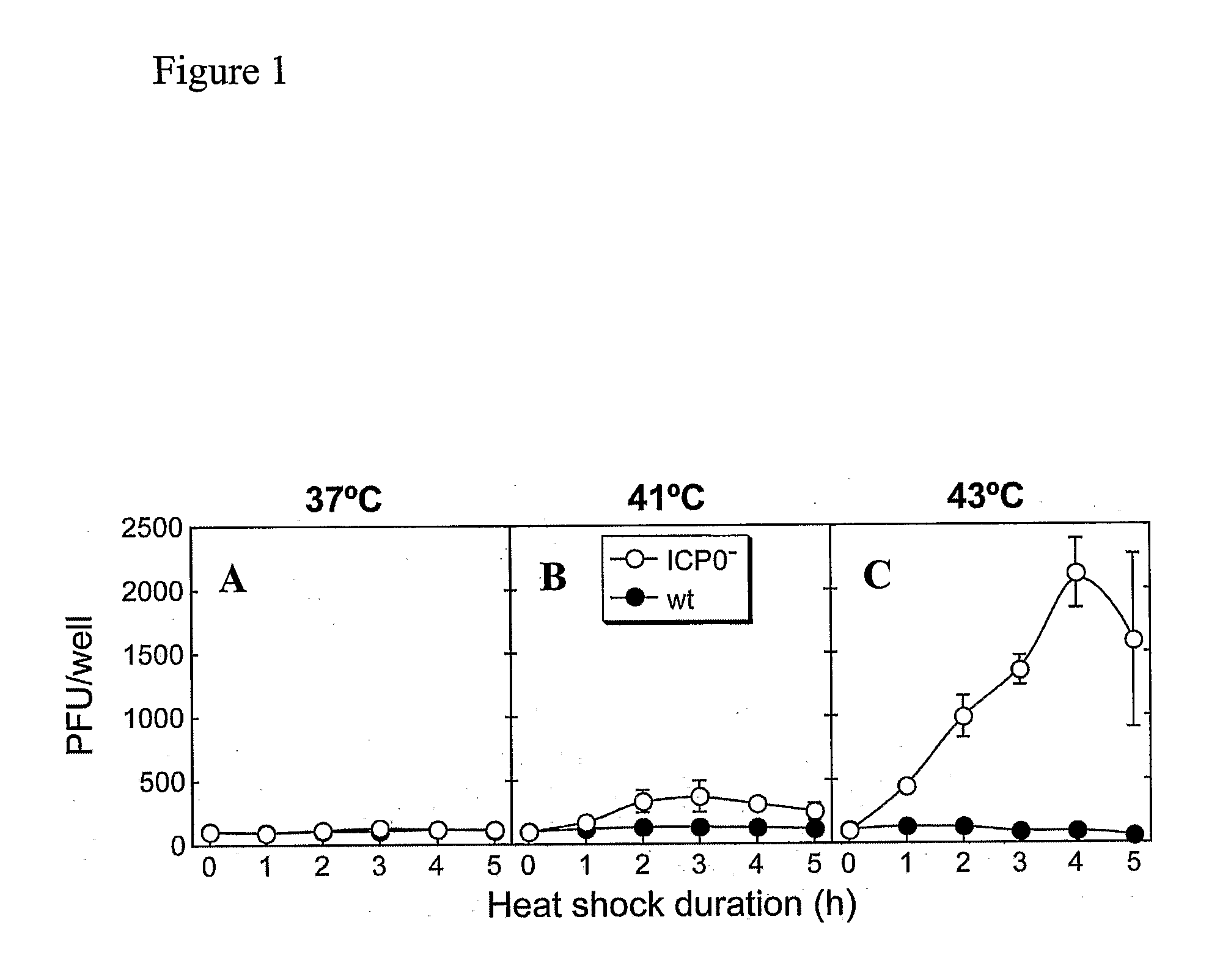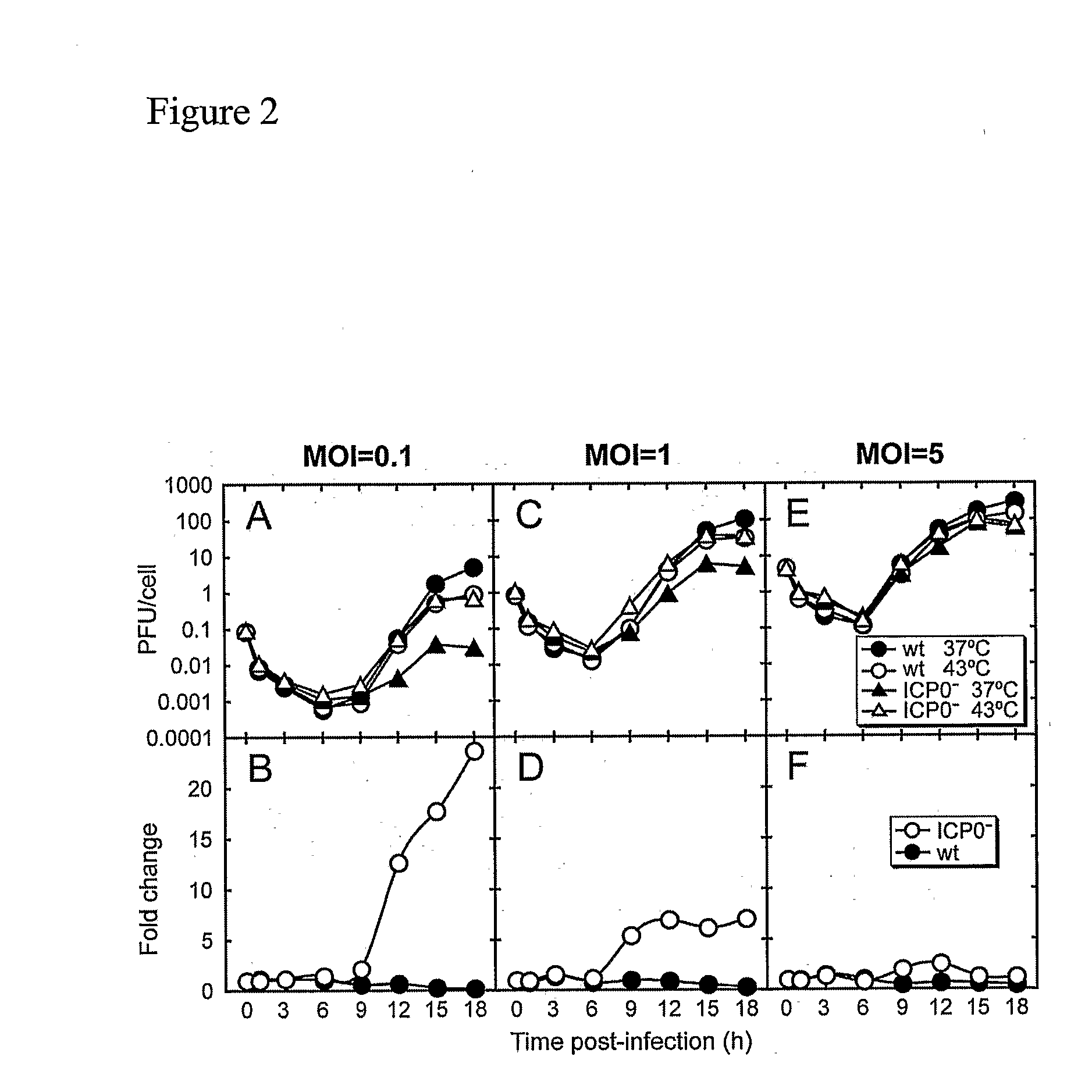Methods for treating or preventing reactivation of a latent herpesvirus infection
a technology for latent herpesvirus and treatment or prevention, applied in the field of treatment or prevention of herpes family viral reactivation, can solve the problems of affecting the host, affecting the incidence of other health problems, so as to reduce the severity of the infection, reduce the frequency of reactivation of latent virus, and reduce the severity of the disease.
- Summary
- Abstract
- Description
- Claims
- Application Information
AI Technical Summary
Benefits of technology
Problems solved by technology
Method used
Image
Examples
example 1
Materials and Methods
[0167]Virus and Virological Analyses
[0168]The KOS strain of HSV-1 is propagated in Vero cells (ATCC No. CCL-81, American Type Culture Collection, Manassass, Va.), titered by viral plaque assay, and stored at −70° C. until used to infect animals.
[0169]Ocular swabs are immersed in 0.2 ml of complete tissue culture medium consisting of RPMI-1640, 10% fetal bovine serum (FBS), and an antibiotic-antimycotic mixture (Life Technologies, Grand Island, N.Y.). The swabs in culture medium are stored at 4° C. until testing by plaque assay. The determination of infectious virus in the cornea and in the trigeminal ganglia of animals is performed in a similar manner. Pairs of corneas and ganglia from individual mice are placed in separate tubes in 0.2 ml of complete medium, homogenized, clarified by centrifugation at 14,000×g for 5 minutes and the supernatant tested for infectious virus on Vero cells.
[0170]Animals and Animal Infection. Male BALB / c strain mice (The Jackson Labo...
example 2
Effect of Glutamine on Heat-Stress Reactivation of HSV
[0172]To test the effect of glutamine (or a composition containing a derivative, conjugate, or analog of glutamine) on reactivation of HSV induced by heat stress, two sets of experiments can be performed. In one set, groups of mice with latent HSV are immersed in 43° C. water up to their necks for 10 minutes. Following the hyperthermic stress, the animals are dried and given an intraperitoneal (IP) injection of 0.1 mg of glutamine suspended in 0.1 ml saline. At 8 and 16 hours after hyperthermia, the animals are again treated with glutamine. Control mice are given IP injections of saline on the same schedule. At 24 hr after hyperthermic stress, the eyes are swabbed, the mice are sacrificed, and the corneas and trigeminal ganglia are analyzed for infectious virus and viral DNA.
[0173]Mice can also be treated by IP injection for 3 days prior to hyperthermic stress at 8 hr intervals on each of the 3 days. The animals are then heat str...
example 3
Effect of Glutamine Prophylaxis on Viral Reactivation
[0176]To test for a prophylactic effect of glutamine (or a composition containing a derivative, conjugate, or analog of glutamine), mice can be treated either IP, orally, or topically with glutamine for three days prior to receiving the reactivation hyperthermic stimulus. These mice can be tested for the levels of infectious virus in their ocular tear film compared to placebo-treated mice which undergo hyperthermically induced reactivation. Control animals that are latent for virus but not heat-stressed and animals that are heat-stressed but not infected should not have infectious virus in their ocular tear film.
[0177]Homogenates of the corneas and trigeminal ganglia of mice that are prophylactically treated with glutamine can also be tested for the level of infectious units as compared to homogenates from placebo-treated animals that are heat-stressed. Again, infectious virus should not be present in the homogenates of control an...
PUM
| Property | Measurement | Unit |
|---|---|---|
| Biocompatibility | aaaaa | aaaaa |
Abstract
Description
Claims
Application Information
 Login to View More
Login to View More - R&D
- Intellectual Property
- Life Sciences
- Materials
- Tech Scout
- Unparalleled Data Quality
- Higher Quality Content
- 60% Fewer Hallucinations
Browse by: Latest US Patents, China's latest patents, Technical Efficacy Thesaurus, Application Domain, Technology Topic, Popular Technical Reports.
© 2025 PatSnap. All rights reserved.Legal|Privacy policy|Modern Slavery Act Transparency Statement|Sitemap|About US| Contact US: help@patsnap.com



